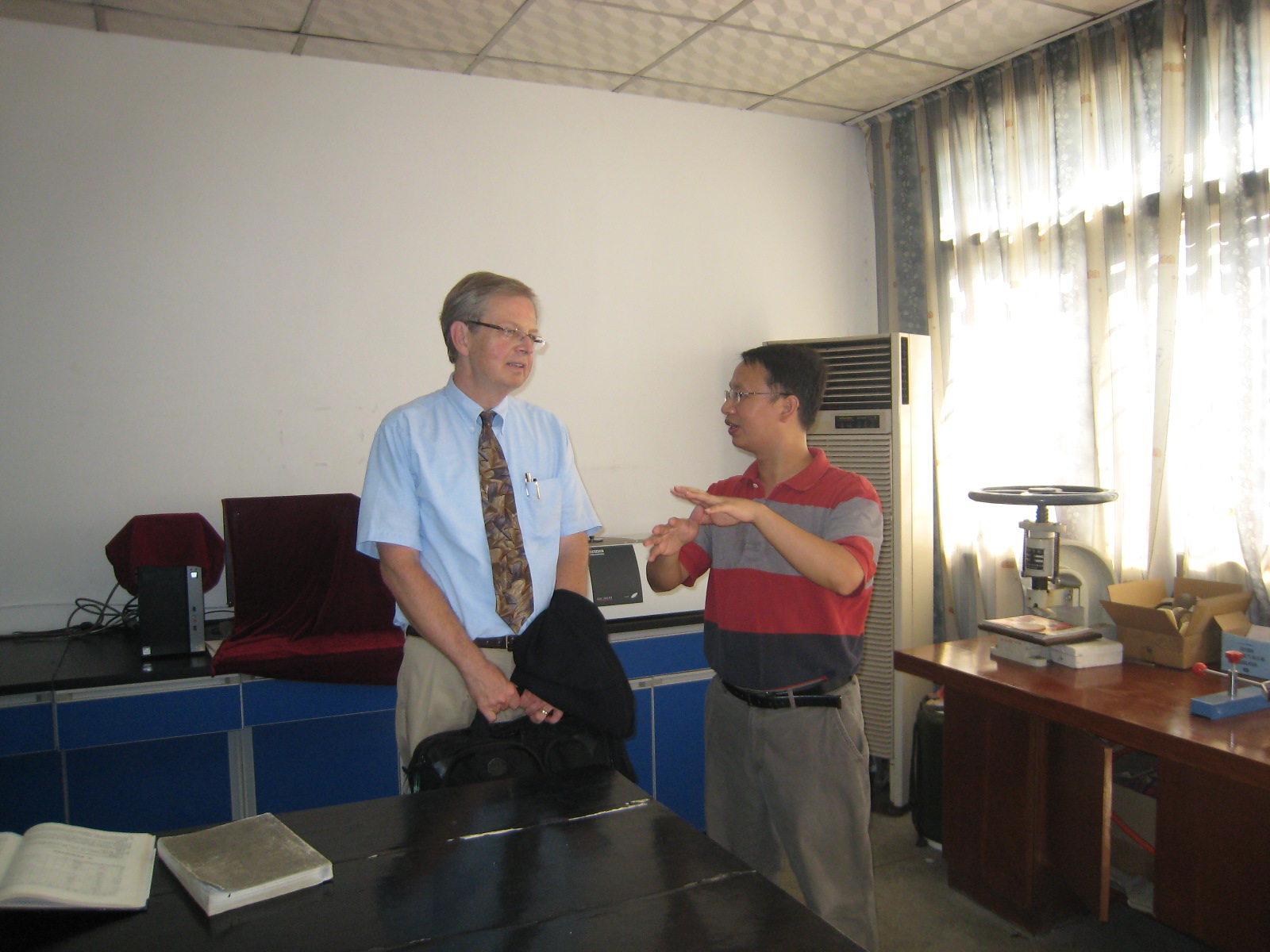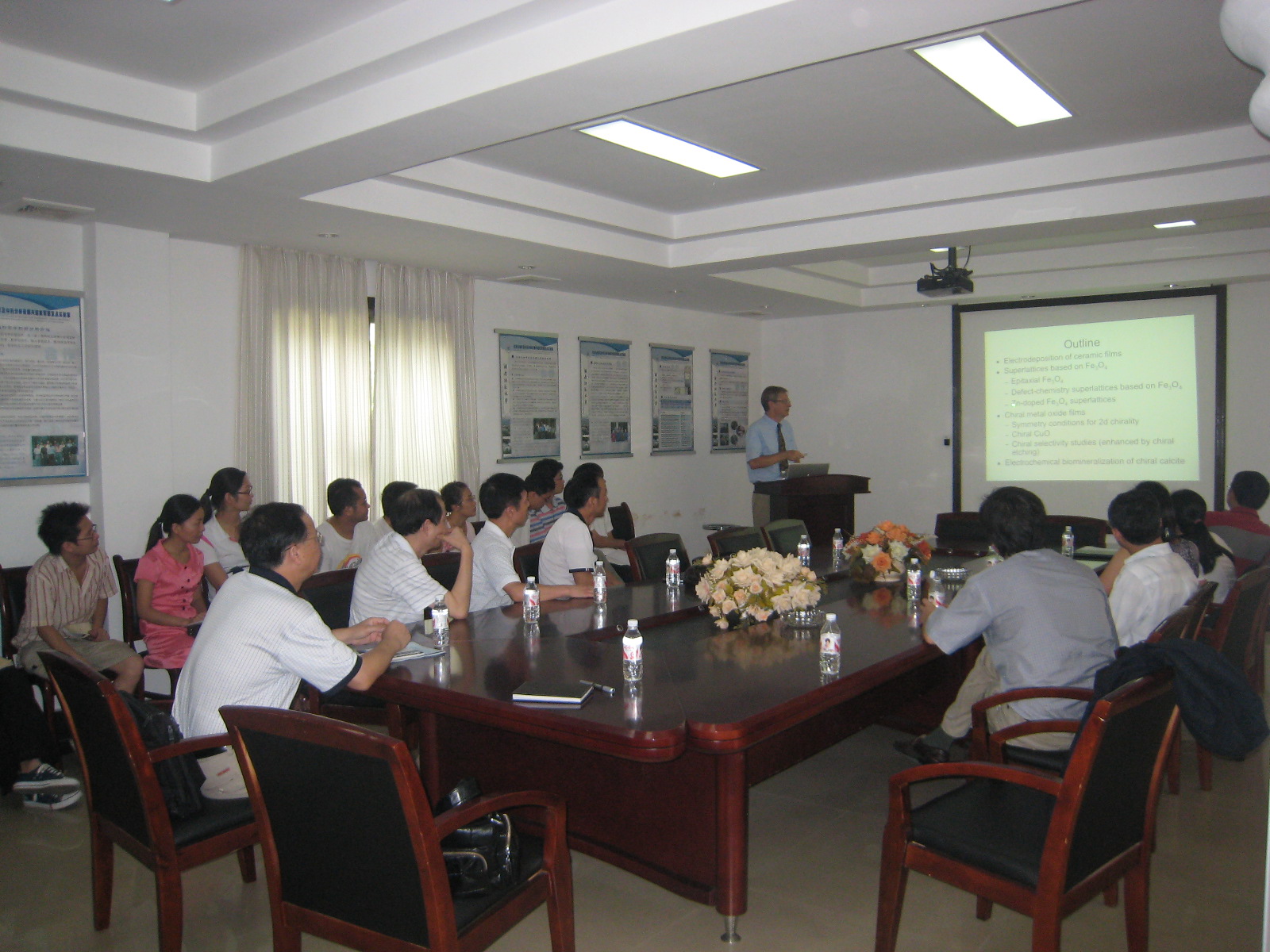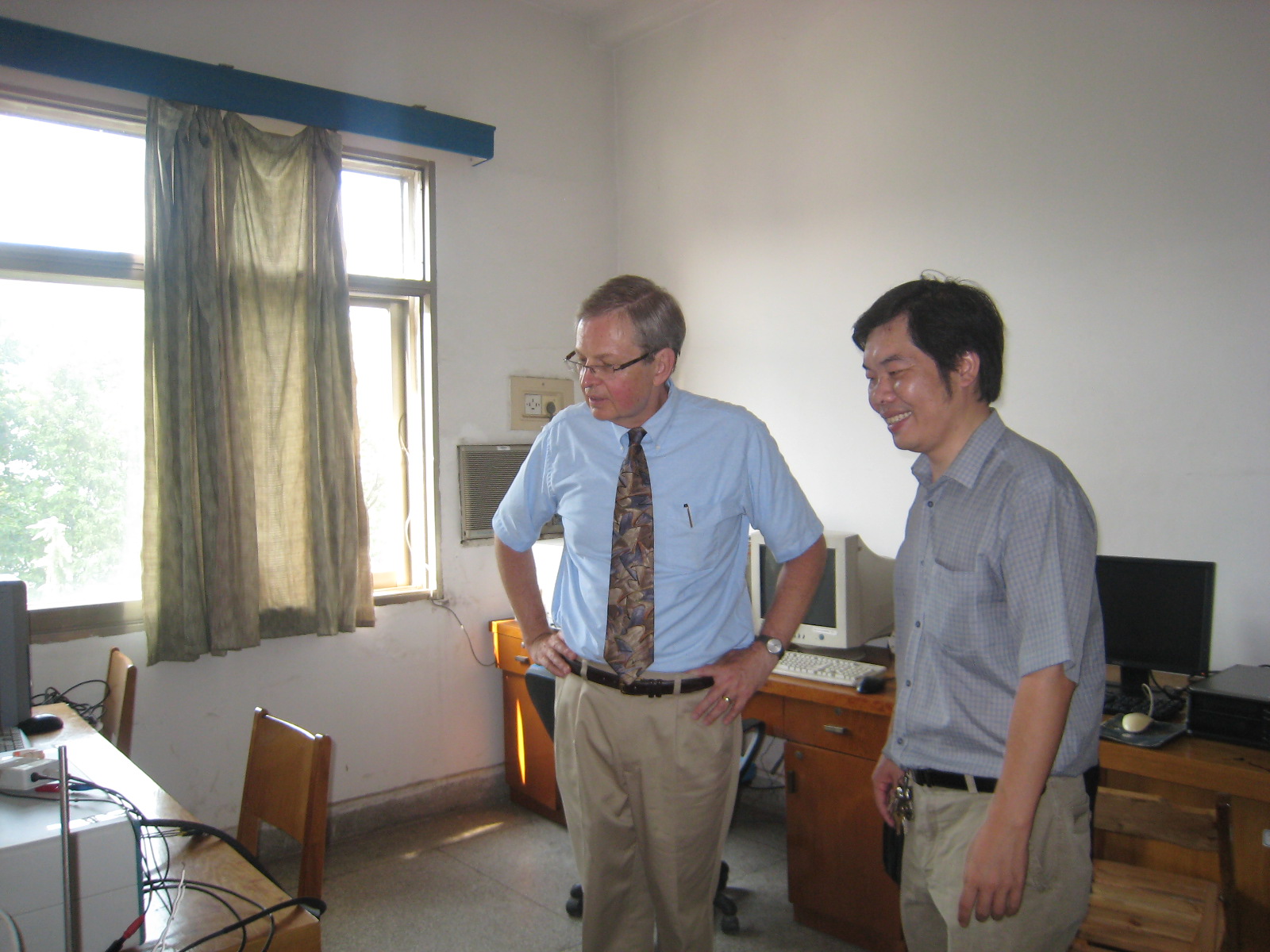

 8月22日上午,美国密苏里科技大学Jay Switzer教授在化学生物学及中药分析教育部重点实验室主任谢青季教授的陪同下参观了实验室,10:00在化学生物学及中药分析教育部重点实验室会议室作了题为“Electrodeposition of Ceramic Superlattices and Chiral Films”的学术报告。报告中教授主要从如何用电沉积法制备各种金属氧化物膜、磁性氧化物超晶格以及手性氧化物膜等方面作了精彩讲述。Prof. Jay Switzer的相关研究在Nature (1篇),Science (4篇),JACS,Angew. Chem., Adv. Mater.,Chem. Mater.和Environ. Sci. Technol.等刊物发表。yl6809永利官网院长尹笃林教授及相关教授和研究生参加了报告和讨论。
8月22日上午,美国密苏里科技大学Jay Switzer教授在化学生物学及中药分析教育部重点实验室主任谢青季教授的陪同下参观了实验室,10:00在化学生物学及中药分析教育部重点实验室会议室作了题为“Electrodeposition of Ceramic Superlattices and Chiral Films”的学术报告。报告中教授主要从如何用电沉积法制备各种金属氧化物膜、磁性氧化物超晶格以及手性氧化物膜等方面作了精彩讲述。Prof. Jay Switzer的相关研究在Nature (1篇),Science (4篇),JACS,Angew. Chem., Adv. Mater.,Chem. Mater.和Environ. Sci. Technol.等刊物发表。yl6809永利官网院长尹笃林教授及相关教授和研究生参加了报告和讨论。
以下是Jay Switzer教授报告的摘要:
In this talk we show that ceramic superlattices based on Fe3O4 and chiral films based on CuO can be electrodeposited. In the deposition of superlattices we use the fact that the departure from equilibrium is controlled through the applied overpotential. Films of ferrimagnetic Fe3O4 can be deposited with stoichiometries which depend on the applied potential. We prepare the films by the reduction of a Fe(III)-TEA (triethanolamine) complex at 80 oC in strongly alkaline solution. The deposition is believed to occur by an electrochemical-chemical (EC) mechanism described by Eq. 1 and 2.
Fe(TEA)3+ + e- → Fe2+ + TEA (1)
Fe2+ + 2Fe(TEA)3+ + 8OH- → Fe3O4 + 2TEA + 4H2O (2)
Because of the EC nature of the deposition reaction, it is possible to control the composition of the film through the applied potential. At low overpotentials at which j = 0, the surface concentration of Fe(TEA)3+ should be equal to the bulk concentration, whereas at high overpotential at which j = jL the surface concentration of Fe(TEA)3+ should approach zero. Hence the material should have an excess of Fe3+ at low overpotential and an excess of Fe2+ at high overpotential. Stoichiometric Fe3O4 should deposit at an applied potential of -1.065 V vs. Ag/AgCl. Superlattices of the material are electrodeposited by pulsing the applied potential between -1.01 and -1.065 V vs. Ag/AgCl. A particularly interesting feature that the superlattices exhibit is resistance switching during perpendicular transport measurements.
Chiral films of CuO are electrodeposited by exploiting the fact that chiral molecular additives can break the symmetry on achiral surfaces of fcc metals such as Au and Cu to produce chiral orientations of CuO. Chiral surfaces lack mirror or glide plane symmetry. Chiral surfaces offer the possibility of developing heterogeneous enantiospecific catalysts that can more readily be separated from the products and reused. These surfaces might also serve as electrochemical sensors for chiral molecules. Our approach to produce chiral surfaces is to electrodeposit low symmetry metal oxide films with chiral orientations on achiral substrates. We have deposited chiral orientations of monoclinic CuO (which is intrinsically achiral) onto single-crystal Au and Cu using both tartaric and malic acid and the amino acids alanine and valine to control the handedness of the electrodeposited films. Electrochemical chiral recognition experiments show that the chiral orientations also expose chiral surfaces. Chiral recognition is enhanced by etching CuO films in solutions of tartaric acid. Chiral nanostructures of calcite are also deposited by “electrochemical biomineralization.”





